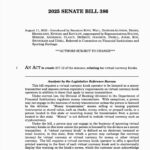Opinion by: Armando Aguilar, head of capital formation and growth at TeraHash
For years, Bitcoin was regarded as a completely inert asset: a decentralized storage option that was economically passive due to its fixed issuance schedule. However, more than $7 billion worth of Bitcoin (BTC) is now earning native on-chain yield through major protocols — this assumption is evolving.
While gold has a market cap of approximately $23 trillion that largely remains idle, Bitcoin, on the other hand, is now generating on-chain returns while holders maintain custody. As new layers are introduced to unlock returns, Bitcoin is crossing a structural threshold: transitioning from being merely passive to productively scarce.
This transformation is subtly reshaping how capital assesses risk, how institutions allocate their reserves, and how portfolio theory considers safety. Scarcity may account for price stability, but productivity clarifies why miners, treasuries, and funds are now opting to store assets in BTC rather than just building around it.
Bitcoin’s economic fundamentals have not changed: The supply is still capped at 21 million, the issuance schedule is transparent, and it cannot be inflated or censored by any central authority. While scarcity, auditability, and resistance to manipulation have always distinguished Bitcoin, by 2025, these unique factors began to take on greater significance.
With the issuance rate locked in and new protocol layers enabling BTC to generate on-chain returns, Bitcoin is now gaining recognition for its potential. New tools are providing holders the opportunity to earn real yield while retaining custody, avoiding reliance on centralized platforms or altering the base protocol. This preserves Bitcoin’s core mechanics while transforming how capital interacts with the asset.
We are already witnessing this effect in action. Bitcoin is currently the only crypto asset officially held in sovereign reserves: El Salvador continues to incorporate BTC into its national treasury, and a 2025 US executive order designated Bitcoin as a strategic reserve asset for critical infrastructure. Additionally, spot exchange-traded funds (ETFs) now hold over 1.26 million BTC — accounting for more than 6% of the total supply.
Furthermore, from the mining perspective, public miners are no longer in a hurry to sell. Instead, an increasing proportion is allocating BTC into staking and synthetic yield strategies to enhance long-term returns.
It’s becoming increasingly clear that the original value proposition has subtly shifted in design yet profoundly in effect. What once rendered Bitcoin trustworthy is now also contributing to its power — a formerly passive asset is evolving into a yield-producing asset. This sets the stage for what lies ahead: a native yield curve developing around Bitcoin itself, as well as Bitcoin-linked assets.
Until recently, the prospect of earning a return on crypto seemed unattainable. In the case of Bitcoin, finding non-custodial yield was challenging, at least without compromising its base-layer neutrality. However, that assumption is no longer valid. Nowadays, new protocol layers are allowing holders to utilize BTC in ways previously reserved for centralized platforms.
Some platforms enable long-term holders to stake native BTC to secure the network while earning yield, all without wrapping the asset or transferring it across chains. Others provide users the opportunity to utilize their Bitcoin in decentralized finance applications, earning fees from swaps and lending while retaining ownership. Importantly, none of these systems require relinquishing keys to a third party, and none depend on the opaque yield schemes that have caused issues in the past.
It is evident now that this is no longer just a trial phase. Moreover, strategies aligned with miners are gradually gaining traction among firms seeking to improve treasury efficiency without exiting the Bitcoin ecosystem. Consequently, a yield curve native to Bitcoin, anchored in transparency, is beginning to take form.
As Bitcoin yield becomes accessible and self-custodied, another challenge arises: How do you quantify it? If protocols are becoming accessible, a lack of clarity persists. Without a standard to describe what productive BTC yields, investors, treasuries, and miners are left to navigate in uncertainty.
If Bitcoin can generate returns, the next logical step is to establish a straightforward way to measure it.
Currently, there is no standardized benchmark. Some investors consider BTC as hedge capital; others actively generate yield. However, variations exist in defining what the actual benchmark for measuring Bitcoin should be, as there are no directly comparable assets. For instance, a treasury team might lock coins for a week but lacks a simple mechanism to explain the associated risk, or a miner might channel rewards into a yield strategy while still viewing it as treasurial diversification.
Consider a mid-sized decentralized autonomous organization with 1,200 BTC and a six-month payroll ahead. It allocates half into a 30-day vault on a Bitcoin-secured protocol and earns yield. However, without a reference point, the team cannot determine if this is a prudent move or a daring one. Depending on the observer, the same decision might be lauded as astute treasury management or critiqued as reckless yield-chasing.
What Bitcoin requires is a benchmark. Not a “risk-free rate” in the bond market sense, but a baseline: repeatable, self-custodied, and on-chain yield that can be generated natively on Bitcoin, after deducting fees, categorized by term lengths — seven days, 30, 90. Just enough framework to transform yield from speculation into something that can be referenced and utilized as a standard.
Once that framework is established, treasury policies, disclosures, and strategies can be built around it, and anything above that baseline can be evaluated based on its inherent risk — whether it is worth pursuing or not.
This is where the analogy with gold falls short. Gold does not yield returns — productive Bitcoin does. The longer treasuries continue to treat BTC as a mere vault asset without yield, the clearer it becomes to distinguish between those effectively managing capital and those who are simply storing it.
Opinion by: Armando Aguilar, head of capital formation and growth at TeraHash.
This article is for general information purposes and is not intended to be and should not be considered as legal or investment advice. The views, thoughts, and opinions expressed here are solely those of the author and do not necessarily reflect or represent the views and opinions of ViZi.



















